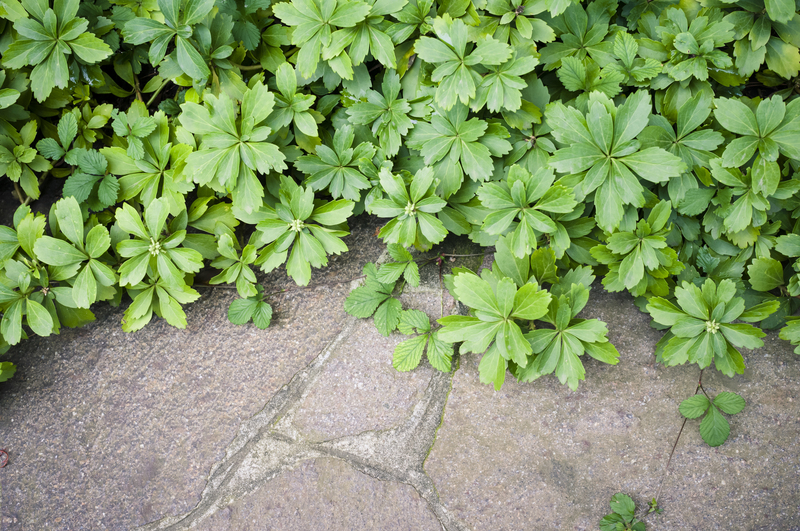Conquer Your Garden Invaders with 3 Strategic Weed Control Tips
Posted on 26/05/2025
Conquer Your Garden Invaders with 3 Strategic Weed Control Tips
Weeds. They are the unwelcome guests in every gardener's paradise, threatening to choke the life out of your flourishing plants and turning your beautiful garden into a battleground. Frustrated and overwhelmed, many gardeners wonder if there's a secret weapon for persistent weed control. If you're ready to transform your garden from overrun to organized, you're in the right place. In this comprehensive guide, we reveal three strategic weed control tips that will help you conquer your garden invaders for good!
Understanding Your Garden's Weed Problems
Before diving into our top strategies to defeat garden weeds, let's grasp what you're up against. Weeds are vigorous, opportunistic plants that can quickly dominate your flowerbeds, vegetable patches, and pristine lawns. Their robust root systems, prolific seeds, and remarkable adaptability make weed management a crucial aspect of garden maintenance.
Why Are Weeds a Problem?
- Resource Competition: Weeds compete with your desired plants for nutrients, sunlight, and water.
- Pests and Disease: Weeds can harbor garden pests and encourage the spread of disease.
- Aesthetic Damage: Unwanted plants can ruin your garden's visual appeal, undermining all your hard work.
- Seed Proliferation: Many weed species produce thousands of seeds, threatening long-term garden health.
Understanding these weed-related challenges is the first step to effective weed control. Armed with the right approach, you can reclaim your garden.

1. Mulch: Your Garden's Protective Armor Against Weeds
Mulching is one of the most effective natural methods to keep weeds at bay. By creating a physical barrier, mulch smothers weed seeds and inhibits their growth, making it an essential element of strategic weed management.
Types of Mulch for Weed Suppression
- Organic Mulch: Includes shredded bark, straw, wood chips, grass clippings, compost, and leaves. Organic mulches improve soil structure and provide nutrients as they break down.
- Inorganic Mulch: Includes gravel, landscape fabric, and black plastic, offering long-lasting weed defense, particularly in pathways and perennial beds.
How to Apply Mulch for Best Results
- Clear the Area: Remove existing weeds before mulching to avoid trapping seeds or roots underneath.
- Depth Matters: Apply mulch in a 2-4 inch layer for optimal weed suppression.
- Leave Space: Keep mulch a few inches away from plant stems and tree trunks to prevent rot and disease.
- Renew Regularly: Organic mulch decomposes over time, so replenish annually for continual weed control.
Mulching offers multiple benefits: reduced weeding, improved moisture retention, regulated soil temperature, and enhanced soil health. Incorporate this strategic step, and you'll notice a dramatic decline in weed growth.
2. Smarter Weeding: Tactics to Outwit Stubborn Garden Weeds
No matter how vigilant you are, weeds are bound to pop up. But strategic, consistent weeding--combined with clever techniques--can give you the edge and ensure weeds don't gain a foothold.
Hand Pulling with a Purpose
- Timing is Everything: The best time for hand weeding is after a rain or watering session. Moist soil makes it easier to pull weeds out by the root.
- Don't Let Them Seed: Prioritize removing weeds before they flower and set seed to prevent future invasions.
- Use Proper Tools: Invest in weeding tools such as hoes, dandelion diggers, or hand forks to make your task more efficient.
- Root Removal: For perennial weeds like dandelion or thistle, ensure you extract the entire root to prevent regrowth.
Avoid Disturbing Dormant Seeds
Many weed seeds lie dormant, waiting for the right moment to sprout. Disturbing the soil during weeding or cultivation can bring these hidden seeds to the surface, where they germinate anew. Try these strategic approaches:
- Minimal Soil Disruption: Only disturb the top inch of soil when removing annual weeds. No-dig methods are your friend!
- Direct Sowing: Where possible, sow new plants directly into established mulch or groundcover to limit soil exposure.
Regular Routine is Key
- Create a weeding calendar--weekly sessions are better than sporadic blitzes.
- Tackle small, manageable areas at a time to prevent feeling overwhelmed.
- Stay vigilant in early spring, catching weeds before they set roots deep into the soil.
By adopting these smart weeding strategies for garden weed control, you set yourself up for long-term success and reduce the spread of invaders each season.
3. Ground Covers and Dense Plantings: Outcompete Weeds Naturally
One of the best ways to control weeds is to outcompete them by filling every possible niche in your garden with beneficial plants. When your wanted plants thrive and shade the earth, there's less space--and sunlight--for weed seeds to take hold.
Choose Aggressive Ground Covers
- Creeping Thyme: Forms a fragrant, dense carpet in sunny spots and is perfect for borders or between paving stones.
- Ajuga (Bugleweed): Excellent in partial shade, ajuga suppresses weeds with its low-growing foliage and attractive blooms.
- Sedum: Hardy, drought tolerant, and quick to spread, making it ideal for rock gardens and slopes.
- Pachysandra, Vinca Minor (Periwinkle), and Sweet Woodruff: All excel in shady areas where weeds often go unchecked.
Maximize Plant Density
Planting your garden beds densely--with little bare soil exposed--makes it hard for weeds to gain a foothold. Here's how:
- Layer Plants: Combine ground covers, shrubs, and perennials of varying heights for continuous cover.
- Companion Planting: Use complementary plants that grow well together to enrich the soil and crowd out pests--and weeds.
- Succession Planting: After harvesting crops, immediately replant the space with other quick-growing plants or cover crops to prevent weed encroachment.
Living Mulch Techniques
- Use annual flowers, edible greens, or legumes as living mulch between rows--these plants keep weeds down while enriching the soil and adding beauty or food value.
- Clover and vetch are particularly popular for vegetable gardens as nitrogen-fixing ground covers.
With these natural techniques for weed control, you can create a living tapestry that is both beautiful and weed-resistant, helping you conquer your garden invaders effectively.
Bonus Strategic Weed Control Tips for Ultimate Success
While our top three strategies--mulching, smarter weeding, and ground covers--are the cornerstone of any winning garden defense, combining a few extra methods will amplify your results.
- Water Wisely: Use soaker hoses or drip irrigation to focus water on your plants' roots instead of weeds, which thrive in broad, moist areas.
- Edge Your Beds: Physical barriers such as garden edging or buried landscape fabric can block encroaching weeds from invading your flower beds.
- Solarization: For heavily infested areas, use clear plastic sheeting in full sun to 'cook' and kill weed seeds and roots before new plantings.
- Spot-Treat Stubborn Weeds: If necessary, use targeted, organic herbicides like vinegar sprays--be careful, as these can harm wanted plants too.
- Maintain Healthy Soil: Fertile, balanced soil supports strong plants that are more likely to outcompete weeds.
- Stay Alert: Monitor your garden regularly, as weed seedlings are much easier to pull than mature plants with established seeds and roots.
Eco-Friendly Weed Control: Win the War, Protect the Planet
Weed control doesn't have to rely on synthetic chemicals. Our tips focus on sustainable, natural methods that nurture your garden's ecosystem. When you avoid harsh herbicides, you protect pollinators, beneficial insects, and the very soil that sustains your plants.
Here are a few eco-friendly weed management tips to keep in mind:
- Choose manual and physical methods as your first line of defense.
- Spread mulch made from local, organic materials.
- Encourage diverse plantings for better biodiversity and soil health.
- Practice patience and persistence--natural solutions take time but yield healthier, more resilient gardens in the long term.

Frequently Asked Questions about Weed Control Strategies
How often should I mulch my garden for weed protection?
Renew organic mulch every 1-2 years, especially in areas prone to weed growth or where mulch decomposes quickly. Inspect each season and add material as needed to maintain coverage.
What's the most effective time of year for garden weed control?
Early spring is ideal. Weeds are weakest when small and soil is moist, making removal easier. However, vigilance throughout the growing season is crucial to stop weeds from seeding and spreading.
Can I use leftover grass clippings as mulch?
Yes, untreated grass clippings make excellent mulch, suppressing weeds while adding nutrients. Apply a thin layer to avoid matting, and ensure clippings are free of weeds or pesticides.
Are weed barriers or landscape fabric a good idea?
Weed barriers can be effective in paths and perennial beds but may hinder water and airflow over time. Combine with mulch for best results, and avoid using under annuals that require frequent planting.
Conclusion: Take Control and Enjoy a Thriving, Weed-Free Garden
Taming a weedy garden may seem daunting, but with strategic weed control techniques, you can tip the scales in favor of your prized plants. By mulching wisely, developing a smart weeding routine, and crowding out weeds with dense plantings, you create a healthy, resilient garden ecosystem.
Remember: The keys to conquering garden invaders are persistence, vigilance, and a little bit of gardening savvy. Select the weed management tips that fit your landscape best and commit to the process. Over time, you'll enjoy less weeding, spectacular blooms, and a landscape that stays tidy all season long.
Ready to reclaim your garden from weeds? Put these three strategic weed control tips into action and watch your landscape flourish, free from unwanted invaders!

